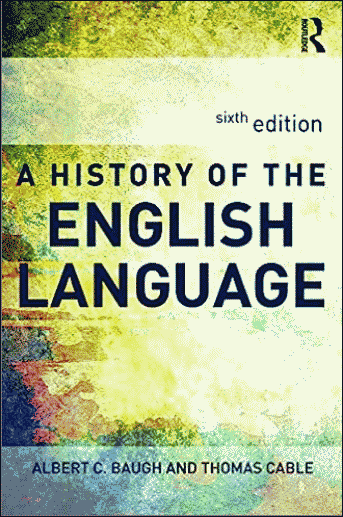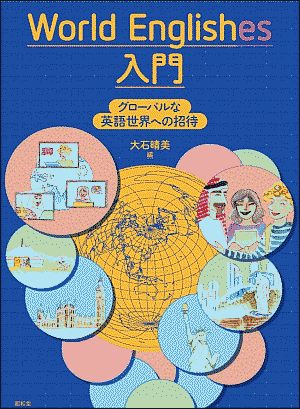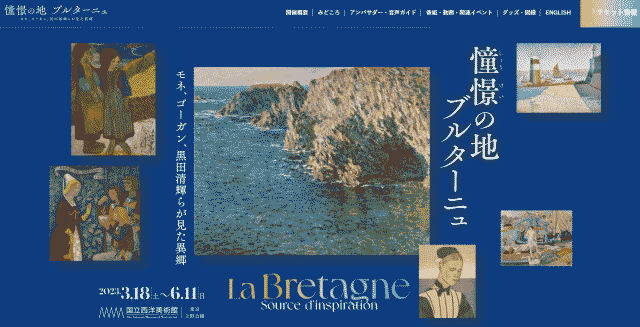2024-08-18 Sun
■ #5592. アングロサクソン人とケルト人の接触をめぐる解説 [bchel][celtic][contact][anglo-saxon][oe][heldio]

Baugh and Cable による英語史の古典的名著を,Voicy heldio にて1節ずつ精読していくシリーズ(有料)が,ゆっくりと継続中です.目下,第4章の "Foreign Influences on Old English" (古英語への他言語からの影響)に入っています.第54節と第55節は,英語史では一般に地味な扱いを受けてきたケルト語からの影響が話題とされています.今回はアングロサクソン人とケルト人の接触がいかなるものだったかを解説している第54節 "The Celtic Influence" について,その英文を掲げます.テキストをお持ちでない方も,関心があれば,この英文を参照しつつ,ぜひ「英語史の古典的名著 Baugh and Cable を読む (54) The Celtic Influence」をお聴きください(第1チャプターは無料で試聴できます).
54. The Celtic Influence. Nothing would seem more reasonable than to expect that the conquest of the Celtic population of Britain by the Anglo-Saxons and the subsequent mixture of the two peoples should have resulted in a corresponding mixture of their languages, that consequently we should find in the Old English vocabulary numerous instances of words that the Anglo-Saxons heard in the speech of the native population and adopted. For it is apparent that the Celts were by no means exterminated except in certain areas, and that in most of England large numbers of them were gradually assimilated into the new culture. The Anglo-Saxon Chronicle reports that at Andredesceaster or Pevensey a deadly struggle occurred between the native population and the newcomers and that not a single Briton was left alive. The evidence of the place-names in this region lends support to the statement. But this was probably an exceptional case. In the east and southeast, where the Germanic conquest was fully accomplished at a fairly early date, it is probable that there were fewer survivals of a Celtic population than elsewhere. Large numbers of the defeated fled to the west. Here it is apparent that a considerable Celtic-speaking population survived until fairly late times. Some such situation is suggested by a whole cluster of Celtic place-names in the northeastern corner of Dorsetshire. It is altogether likely that many Celts were held as slaves by the conquerors and that many of the Anglo-Saxons chose Celtic mates. In parts of the island, contact between the two peoples must have been constant and in some districts intimate for several generations.
一般には,アングロサクソン人はケルト人を根絶やしにした,完全制圧したなどと言われることが多いのですが,実際には征服の貫徹度は地域によっても異なっていたし,上下関係はあったとしても意外と長く共存していたのではないかということです.
一方,古英語とケルト語の言語的関係はどのようなものだったのでしょうか.それは次の第55節 "Celtic Place-Names and Other Loanwords" (ケルト語の地名と他の借用語)で取り上げられています.「英語史の古典的名著 Baugh and Cable を読む (55) Celtic Place-Names and Other Loanwords」よりどうぞ.
heldio のシリーズのバックナンバー一覧は「#5291. heldio の「英語史の古典的名著 Baugh and Cable を読む」シリーズが順調に進んでいます」 ([2023-10-22-1]) に掲載しています.
・ Baugh, Albert C. and Thomas Cable. A History of the English Language. 6th ed. London: Routledge, 2013.
2024-07-28 Sun
■ #5571. 朝カル講座「現代の英語に残る古英語の痕跡」のまとめ [asacul][notice][lexicology][vocabulary][oe][kenning][beowulf][compounding][derivation][word_formation][celtic][contact][borrowing][etymology][kdee]
先日の記事「#5560. 7月27日(土)の朝カル新シリーズ講座第4回「現代の英語に残る古英語の痕跡」のご案内」 ([2024-07-17-1]) でお知らせした通り,昨日朝日カルチャーセンター新宿教室にてシリーズ講座「語源辞典でたどる英語史」の第4回「現代の英語に残る古英語の痕跡」を開講しました.今回も教室およびオンラインにて多くの方々にご参加いただき,ありがとうございました.
古英語と現代英語の語彙を比べつつ,とりわけ古英語のゲルマン的特徴に注目した回となっています.古英語期の歴史的背景をさらった後,古英語には借用語は比較的少なく,むしろ自前の要素を組み合わせた派生語や複合語が豊かであることを強調しました.とりわけ複合 (compounding) からは kenning (隠喩的複合語)と呼ばれる詩情豊かな表現が多く生じました.ケルト語との言語接触に触れた後,「#1124. 「はじめての古英語」第9弾 with 小河舜さん&まさにゃん&村岡宗一郎さん」で注目された Beowulf からの1文を取り上げ,古英語単語の語源を1つひとつ『英語語源辞典』で確認していきました.
以下,インフォグラフィックで講座の内容を要約しておきます.
2024-02-04 Sun
■ #5396. フランス語とラテン語からの大量の語彙借用は英語の何をどう変えたか? [lexicology][french][latin][loan_word][word_formation][lexical_stratification][contact][semantic_change][derivation]
英語語彙史においてフランス語やラテン語の影響が甚大であることは,折に触れて紹介してきた.何といっても借用された単語の数が万単位に及び,大きい.しかし,数や量だけの影響にとどまらない.大規模借用の結果として,英語語彙の質も,主に中英語期以降に,著しく変化した.その質的変化について,Durkin (224) が重要な3点を指摘している.
・ The derivational morphology of English was (eventually) completely transformed by the accommodation of whole word families of related words from French and Latin, and by the analogous expansion of other word families within English exploiting the same French and Latin derivational affixes (especially suffixes).
・ Not only was a good deal of native vocabulary simply lost, but many other existing words showed meaning changes (especially narrowing) as semantic fields were reshaped following the adoption of new words from French and Latin.
・ The massive borrowing of less basic vocabulary, especially in a whole range of technical areas, led to extensive and enduring layering or stratification in the lexis of English, and also to a high degree of dissociation in many semantic fields (e.g. the usual adjective corresponding in meaning to hand is the etymologically unrelated manual)
1点目は,単語の家族 (word family) や語形成 (word_formation) そのものが,本来の英語的なものからフランス・ラテン語的なものに大幅に入れ替わったことに触れている.2点目は,本来語が死語になったり,意味変化 (semantic_change) を経たりしたものが多い事実を指摘している.3点目は,比較的程度の高い語彙の層が新しく付け加わり,語彙階層 (lexical_stratification) が生じたことに関係する.
単純化したキーワードで示せば,(1) 語形成の変質,(2) 意味変化,(3) 語彙階層の発生,といったところだろうか.これらがフランス語・ラテン語からの大量借用の英語語彙史上の質的意義である.
・ Durkin, Philip. Borrowed Words: A History of Loanwords in English. Oxford: OUP, 2014.
2023-10-07 Sat
■ #5276. 世界英語における子音と母音の変容 --- 大石晴美(編)『World Englishes 入門』(昭和堂,2023年)の序章より [world_englishes][vowel][diphthong][consonant][contact][substratum_theory][phonetics][phonology][variety][th][we_nyumon]
「#5268. 大石晴美(編)『World Englishes 入門』(昭和堂,2023年)」 ([2023-09-29-1]) で紹介したこちらの本の序章において,標準英語で用いられる子音や母音の音素が,世界英語の諸変種では母語からの影響を受けて異なる発音で代用される例が挙げられている.
まず「子音が母語からの影響を受ける例」を挙げてみよう (12) .
| 子音の変容 | 英語変種 |
|---|---|
| [θ] [ð] を [t] [d] で代用(歯摩擦音が歯茎閉鎖音になる) | インド英語 [th],ガーナ英語,フィリピン英語,シンガポール英語,マレーシア英語,日本の英語,モンゴルの英語,ミャンマーの英語 |
| [θ] [ð] を [s] [z] で代用(歯摩擦音が歯茎摩擦音になる) | ドイツの英語,スロベニアの英語,韓国の英語 [s],日本の英語,モンゴルの英語 |
| [f] を [p] で代用(唇歯摩擦音が両唇閉鎖音になる) | フィリピン英語,韓国の英語 [ph],モンゴルの英語,ミャンマーの英語 |
| [v] と [w] の区別をしない | ドイツの英語,フィンランドの英語,インド英語,中国語母語話者の英語,モンゴルの英語 |
/θ, ð/ の異なる実現については「#4666. 世界英語で扱いにくい th-sound」 ([2022-02-04-1]) も参照.
次に「母音が母語からの影響を受ける例」を挙げる (12) .
| 母音の変容・添加 | 英語変種 |
|---|---|
| 二重母音が長母音になる | ジャマイカ英語,インド英語 |
| 二重母音が短い単母音になる | ガーナ英語,フィリピン英語,シンガポール英語,マレーシア英語 |
| 子音の後に母音が入る | 韓国の英語,日本の英語,モンゴルの〔英〕語 |
| 長母音と短母音の区別をしない | フィリピン英語,シンガポール英語,マレーシア英語,韓国の英語,スロベニアの英語 |
日本語母語話者による英語発音の癖もいくつか含まれているが,いずれも日本語母語話者に限られているわけではないことがわかり興味深い.サンプルとはいえ,このような一覧を掲げてくれるのはたいへんありがたいですね.

・ 大石 晴美(編) 『World Englishes 入門』 昭和堂,2023年.
2023-09-18 Mon
■ #5257. 最近の Mond での回答,5件 [mond][sobokunagimon][politeness][simplification][contact][heldio][youtube][hel_education][phonetics][prestige][speed_of_change][language_myth][link]
ここ数日間で,知識共有サービス Mond に寄せられてきた言語系の質問に5件ほど回答しました.こちらでもリンクを共有します.
(1) 敬語の表現が少ない英語の話者には,日本人よりも敬意を示す機会が少ないのでしょうか?
(2) 歴史的に見て「言語の変化=簡略化」なのでしょうか?
(3) ブログ,ラジオ,YouTubeなど,様々なメディアを通じて英語の歴史や語源に関する情報を発信していらっしゃいますが,これらのメディアごとにアプローチやコンセプトを変えて情報を提供していますか?
(4) なぜ人々は(もちろん個人差はあれど)イギリスやフランスなどのアクセントを“魅力的”とし,アジアやインドのアクセントを“魅力がない”とするのでしょうか?
(5) 言語の変化は,どの程度の速度で起こりますか? 例えば,新しい言葉や表現は,どのくらいの頻度で生まれるものなのでしょうか?
Mond に寄せられる言語系の質問は多様ですが,日本語と諸外国語との比較というジャンルの質問が目立ちます.今回も (1) や (4) がそのジャンルに属するかと思います.母語は万人にとって特別な存在であり,あまりに思い入れが強いために,他の言語と比べてきわめて特異な性質をもっているものと錯覚してしまうことがしばしば起こります.とりわけ語学を通じて理解の深まった他言語と比較するときに,母語の際立った言語特徴が目に付くことが多く,母語の特別視に拍車がかかります.
長年言語学に触れてきた経験から感じることは,母語の特別視は往々にして行き過ぎる傾向があるということです.確かに各々の言語には固有の特徴があるもので,その点では日本語も例外ではないのですが,日本語のみに観察される言語特徴というのは,さほど多くあるわけではなく,広く古今東西の諸言語を見渡せば類例はおおよそ見つかるものです.言語の素朴な疑問に関する直感は,当たることもありますが,割と外れることも多いのです.
今回の5件の質問のうちの3つ,(1), (2), (4) は,振り返ってみれば,言語にまつわる神話 (language_myth) に関わる質問だったように思います.言語学的な考察を通じて,言語の化けの皮を一枚一枚剥いでいくのが,何ともエキサイティングですね.
2023-05-23 Tue
■ #5139. 英語史において「ケルト語仮説」が取り沙汰されてきた言語項 [celtic_hypothesis][contact][borrowing][substratum_theory][syntax][be][progressive][do-periphrasis][nptr][th][vowel][voicy][heldio]
英語史における「ケルト語仮説」 (celtic_hypothesis) について,これまでいくつかの記事で取り上げてきた.
・ 「#689. Northern Personal Pronoun Rule と英文法におけるケルト語の影響」 ([2011-03-17-1])
・ 「#1254. 中英語の話し言葉の言語変化は書き言葉の伝統に掻き消されているか?」 ([2012-10-02-1])
・ 「#1342. 基層言語影響説への批判」 ([2012-12-29-1])
・ 「#1851. 再帰代名詞 oneself の由来についての諸説」 ([2014-05-22-1])
・ 「#3754. ケルト語からの構造的借用,いわゆる「ケルト語仮説」について」 ([2019-08-07-1])
・ 「#3755. 「ケルト語仮説」の問題点と解決案」 ([2019-08-08-1])
・ 「#3969. ラテン語,古ノルド語,ケルト語,フランス語が英語に及ぼした影響を比較する」 ([2020-03-09-1])
・ 「#4528. イギリス諸島の周辺地域に残る3つの発音」 ([2021-09-19-1])
・ 「#4595. 強調構文に関する「ケルト語仮説」」 ([2021-11-25-1])
・ 「#5129. 進行形に関する「ケルト語仮説」」 ([2023-05-13-1])
近年の「ケルト語仮説」では,(主に語彙以外の)特定の言語項がケルト諸語から英語へ移動した可能性について検討が進められてきた.Hickey (505) によりケルト語の影響が取り沙汰されてきた言語項を一覧してみよう.ただし,各項目について,注目されている地域・変種や文献に現われるタイミングなどはバラバラであること,また言語接触によらず言語内的な要因のみで説明もし得るものがあることなど,一覧の読み方には注意が必要である.
Table 3. Possible transfer features from Celtic (Brythonic) to English
1. Lack of external possessor construction Morphosyntactic 2 Twofold paradigm of to be 3. Progressive verb forms 4. Periphrastic do 5. Northern subject rule 6. Retention of dental fricatives Phonological 7. Unrounding of front vowels
1 は,英語で My head is sore. のように体の部位などに関して所有格で表現し,The head is sore. のように冠詞を用いない用法を指す.
2 は,古英語(主にウェストサクソン方言)において be 動詞が,母音あるいは s- で始まる系列と,b- で始まる系列の2種類の系列が併存していた状況を指す.
3 は,「#5129. 進行形に関する「ケルト語仮説」」 ([2023-05-13-1]) を参照.
4 は,「#486. 迂言的 do の発達」 ([2010-08-26-1]),「#3755. 「ケルト語仮説」の問題点と解決案」 ([2019-08-08-1]) を参照.
5 は,「#689. Northern Personal Pronoun Rule と英文法におけるケルト語の影響」 ([2011-03-17-1]) を参照.
6 は,th = [θ] という比較的稀な子音が現代まで残っている事実を指す.
7 は,古英語に円唇前舌母音 [y, ø] があったことを指す.
今回の Hickey の一覧と類似するリストについては「#3754. ケルト語からの構造的借用,いわゆる「ケルト語仮説」について」 ([2019-08-07-1]) も参照.
関連して,Voicy heldio より「#715. ケルト語仮説」もどうぞ.
・ Hickey, Raymond. "Early English and the Celtic Hypothesis." Chapter 38 of The Oxford Handbook of the History of English. Ed. Terttu Nevalainen and Elizabeth Closs Traugott. New York: OUP, 2012. 497--507.
2023-05-22 Mon
■ #5138. 句比較の発達と言語接触 [comparison][adjective][suffix][superlative][contact][synthesis_to_analysis][latin][french][grammaticalisation][german][dutch][french_influence_on_grammar]
形容詞・副詞の比較級・最上級の作り方には, -er/-est 語尾を付す形態的な方法と more/most を前置する統語的な方法がある.それぞれを「屈折比較」と「句比較」と呼んでおこう.これについては,hellog,heldio,その他でも様々に紹介してきた.「#4834. 比較級・最上級の歴史」 ([2022-07-22-1]) に関連リンクをまとめているので参照されたい.
英語やロマンス諸語の歴史では,屈折比較から句比較への変化が生じてきた.印欧語族に一般に観察される「総合から分析へ」 (synthesis_to_analysis) の潮流に沿った事例として見られることが多い.この変化は,比較構文の成立という観点からは文法化 (grammaticalisation) の1例ともとらえられる.
今回は Heine and Kuteva による言語接触に関わる議論を紹介したい.英語やいくつかの言語において歴史的に句比較が発達した1要因として,ロマンス諸語との言語接触が関係しているのではないかという仮説だ.英語がフランス語やラテン語の影響のもとに句比較を発達させたという仮説自体は古くからあり,上記のリンク先でも論じてきた通りである.Heine and Kuteva は,英語のみならず他の言語においても言語接触の効果が疑われるとし,言語接触が決定的な要因だったとは言わずとも "an accelerating factor" (96) と考えることは可能であると述べている.英語を含めて4つの事例が挙げられている (96) .
a. Analytic forms were still rare in Northern English in the fifteenth century, while in Southern English, which was more strongly exposed to French influence, these forms had become current at least a century earlier . . . .
b. In German, the synthetic comparative construction is still well established, e.g. schön 'beautiful', schön-er ('beautiful-COMP') 'more beautiful'. But in the dialect of Luxembourg, which has a history of centuries of intense contact with French, instances of an analytic comparative can be found, e.g. mehr schön ('more beautiful', presumably on the model of French plus beau ('more beautiful') . . . .
c. The Dutch varieties spoken in Flanders, including Algemeen Nederlands, have been massively influenced by French, and this influence has also had the effect that the analytic pattern with the particle meer 'more' is used increasingly on the model of French plus, at the expense of the inherited synthetic construction using the comparative suffix -er . . . .
d. Molisean has a 500-years history of intense contact with the host language Italian, and one of the results of contact was that the speakers of Molisean have given up the conventional Slavic synthetic construction by replicating the analytic Italian construction, using veče on the model of Italian più 'more' as degree marker. Thus, while Standard Croatian uses the synthetic form lyepši 'more beautiful', Molisean has più lip ('more beautiful') instead . . . .
このようなケースでは,句発達の発達は,言語接触によって必ずしも推進 ("propel") されたとは言えないものの,加速 ("accelerate") したとは言えるのではないか,というのが Heine and Kuteva の見解である.
・ Heine, Bernd and Tania Kuteva. "Contact and Grammaticalization." Chapter 4 of The Handbook of Language Contact. Ed. Raymond Hickey. 2010. Malden, MA: Wiley-Blackwell, 2013. 86--107.
2023-05-20 Sat
■ #5136. 疑問詞から間接疑問の従属接続詞へ --- 印欧語が非印欧語に及ぼした影響 [contact][grammaticalisation][interrogative][conjunction][linguistic_area][syntax]
言語接触 (contact) と文法化 (grammaticalisation) の関わりについて,Heine and Kuteva の論文を連日参照している.多くの印欧諸語には,疑問詞が間接疑問の従属接続詞としても用いられるという特徴がある.例えば,英語の直接疑問文 Who came? に対して,間接疑問文 I don't know who came. などが認められるが,ここでは同じ疑問詞 who が用いられている.この特徴は,英語にとどまらず, ときに "Standard Average European" と呼ばれる主要な印欧語族の言語群にも認められる.基本的には,語族内で広く共有されている,語族としての特徴だと考えられる.
しかし,興味深いことに,この特徴は,印欧諸語と地理的に隣接して行なわれている非印欧諸語にも観察される.つまり,印欧諸語と濃密な言語接触を経てきたとおぼしき非印欧諸語において,疑問詞が間接疑問の従属接続詞としても用いられるというのだ.これは,それらの非印欧諸語において独立して生じた言語項ではなく,印欧諸語との言語接触が引き金 (trigger) となって文法化した言語項であることを示唆する.
Heine and Kuteva (95) は,先行研究を参照しつつ次のような事例を挙げている.
a. Basque on the model of Spanish, Gascon, and French . . . .
b. Balkan Turkish on the model of Balkanic languages . . . .
c. the North Arawak language Tariana of northwestern Brazil on the model of Portuguese . . . .
d. the Aztecan language Pipil of El Salvador on the model of Spanish . . . .
これが事実であれば,言語接触が「推進」 (propel) させた文法化の事例ということになるだろう.
・ Heine, Bernd and Tania Kuteva. "Contact and Grammaticalization." Chapter 4 of The Handbook of Language Contact. Ed. Raymond Hickey. 2010. Malden, MA: Wiley-Blackwell, 2013. 86--107.
2023-05-18 Thu
■ #5134. 言語項移動の主な種類を図示 [contact][borrowing][grammaticalisation][terminology][typology]
昨日の記事「#5133. 言語項移動の類型論」 ([2023-05-17-1]) の続編.Heine and Kuteva (87) が,言語項移動 (linguistic transfer) の主な種類を次のように分類している(ここでは提示の仕方を少々改変している).
Contact-induced transfer ─┬─ Borrowing │ └─ Replication ─┬─ Lexical replication │ └─ Grammatical replication ─┬─ Contact-induced grammaticalization │ └─ Restructuring ─┬─ Loss │ └─ Rearrangement
Heine and Kuteva によれば,これらの用語やその背後にある洞察は,Weinreich に負っている (86) .replication とは "kinds of transfer that do not involve phonetic substance of any kind" のことであり,伝統的に "structural borrowing" や "(grammatical) calquing" と呼ばれてきたものに相当する.この replication には,一方で語彙に関するものがあり,他方で文法的意味・構造に関するものがある.後者の replication は,本質的には文法化 (grammaticalisation) に沿ったものとなるが,そうでない少数の例のために restructuring という用語を充てておく(そしてさらに細分化する).上の図は,このような言語項移動に関する見方を整理したものである.
言語接触 (contact) に関する類型論 (typology) は様々なものが提案されてきたが,この Heine and Kuteva の分類もたいへん示唆的である.その他,以下の記事などを参照されたい.
・ 「#1779. 言語接触の程度と種類を予測する指標」 ([2014-03-11-1])
・ 「#1780. 言語接触と借用の尺度」 ([2014-03-12-1])
・ 「#1781. 言語接触の類型論」 ([2014-03-13-1])
・ 「#1985. 借用と接触による干渉の狭間」 ([2014-10-03-1])
・ 「#2008. 言語接触研究の略史」 ([2014-10-26-1])
・ 「#2009. 言語学における接触,干渉,2言語使用,借用」 ([2014-10-27-1])
・ 「#2079. fusion と mixture」 ([2015-01-05-1])
・ 「#4410. 言語接触の結果に関する大きな見取り図」 ([2021-05-24-1])
・ Heine, Bernd and Tania Kuteva. "Contact and Grammaticalization." Chapter 4 of The Handbook of Language Contact. Ed. Raymond Hickey. 2010. Malden, MA: Wiley-Blackwell, 2013. 86--107.
・ Weinreich, Uriel. Languages in Contact: Findings and Problems. New York: Publications of the Linguistic Circle of New York, 1953. The Hague: Mouton, 1968.
2023-05-17 Wed
■ #5133. 言語項移動の類型論 [contact][borrowing][grammaticalisation][semiotics][semantic_borrowing][syntax][word_order][terminology][typology]
言語Aから言語Bへある言語項が移動することを "linguistic transfer" (言語項移動)と呼んでおこう.言語接触 (contact) において非常に頻繁に起こる現象であり,その典型的な現われの1つが語の借用 (borrowing) である.しかし,それだけではない.語の意味だけが移動する意味借用 (semantic_borrowing) もあれば,統語的な単位や関係が移動する例もある.音素(体系)の移動や語用論的項目の移動もあるかもしれない.一言で "linguistic transfer" といっても,いろいろな種類があり得るのだ.
Heine and Kuteva (87) は,5種類の言語項移動を認めている.
a. form, that is, sounds or combinations of sounds,
b. meanings (including grammatical meanings) or combinations of meanings,
c. form-meaning units,
d. syntactic relations, that is, the order of meaningful elements,
e. any combination of (a) through (d).
音形の移動を伴う a と c は,平たくいえば「借用」 (borrowing) である.一方,b と d は音形の移動を伴わない移動であり,先行研究にならって「複製」 (replication) と呼んでおこう.大雑把にいえば,借用はより具体的な項目の移動で,複製はより抽象的な項目の移動である.ちなみに e はすべてのごった煮である.この言語項移動の類型論は,意外とわかりやすいと思っている.
・ Heine, Bernd and Tania Kuteva. "Contact and Grammaticalization." Chapter 4 of The Handbook of Language Contact. Ed. Raymond Hickey. 2010. Malden, MA: Wiley-Blackwell, 2013. 86--107.
2023-05-13 Sat
■ #5129. 進行形に関する「ケルト語仮説」 [celtic][borrowing][syntax][contact][substratum_theory][celtic_hypothesis][progressive][verb][irish_english][aspect]
「#4595. 強調構文に関する「ケルト語仮説」」 ([2021-11-25-1]) で参照した Filppula and Klemola の論文を再読している.同論文では,英語における be + -ing の「進行形」 (progressive form) の発達(その時期は中英語期とされる)も基層のケルト語の影響によるものではないかという「ケルト語仮説」 (celtic_hypothesis) が唱えられている.
まず興味深い事実として,現代のケルト圏で行なわれている英語諸変種では,標準英語よりも広範に進行形が用いられるという.具体的には Irish English, Welsh English, Hebridean English, Manx English において,標準的には進行形を取りにくいとされる状態動詞がしばしば進行形で用いられること,動作動詞を進行形にすることにより習慣相が示されること,would や used (to) に進行形が後続し,習慣的行動が表わされること,do や will に進行形が後続する用法がみられることが報告されている.Filppula and Klemola (212--14) より,それぞれの例文を示そう.
・ There was a lot about fairies long ago [...] but I'm thinkin' that most of 'em are vanished.
・ I remember my granfather and old people that lived down the road here, they be all walking over to the chapel of a Sunday afternoon and they be going again at night.
・ But they, I heard my father and uncle saying they used be dancing there long ago, like, you know.
・ Yeah, that's, that's the camp. Military camp they call it [...] They do be shooting there couple of times a week or so.
これらは現代のケルト変種の英語に見られる進行形の多用という現象を示すものであり,事実として受け入れられる.しかし,ケルト語仮説の要点は,中英語における進行形の発達そのものが基層のケルト語の影響によるものだということだ.前者と後者は注目している時代も側面も異なっていることに注意したい.それでも,Filppula and Klemola (218--19) は,次の5つの論点を挙げながら,ケルト語仮説を支持する(引用中の PF は "progressive forms" を指す).
(i) Of all the suggested parallels to the English PF, the Celtic (Brythonic) ones are clearly the closest, and hence, the most plausible ones, whether one think of the OE periphrastic constructions or those established in the ME and modern periods, involving the -ing form of verbs. This fact has not been given due weight in some of the earlier work on this subject.
(ii) The chronological precedence of the Celtic constructions is beyond any reasonable doubt, which also enhances the probability of contact influence from Celtic on English.
(iii) The socio-historical circumstances of the Celtic-English interface cannot have constituted an obstacle to Celtic substratum influences in the area of grammar, as has traditionally been argued especially on the basis of the research (and some of the earlier, too) has shown that the language shift situation in the centuries following the settlement of the Germanic tribes in Britain was most conductive to such influences. Again, this aspect has been ignored or not properly understood in some of the research which has tried to play down the role of Celtic influence in the history of English.
(iv) The Celtic-English contacts in the modern period have resulted in a similar tendency for some regional varieties of English to make extensive use of the PF, which lends indirect support to the Celtic hypothesis with regard to early English.
(v) Continuous tenses tend to be used more in bilingual or formerly Celtic-speaking areas than in other parts of the country . . . .
ケルト語仮説はここ数十年の間に提起され論争の的となってきた.いまだ少数派の仮説にとどまるといってよいが,伝統的な英語史記述に一石を投じ,言語接触の重要性に注目させてくれた点では,学界に貢献していると評価できる.
・ Filppula, Markku and Juhani Klemola. "English in Contact: Celtic and Celtic Englishes." Chapter 107 of English Historical Linguistics: An International Handbook. 2 vols. Ed. Alexander Bergs and Laurel J. Brinton. Berlin: Mouton de Gruyter, 2012. 1687--1703.
2023-04-24 Mon
■ #5110. 国立西洋美術館「憧憬の地 ブルターニュ展」訪問に向けての予習 [museum][seminar][khelf][celtic][breton][voicy][heldio][breton_lai][contact][literature][linguistic_imperialism][language_death][brittany_exhibition]
目下,東京・上野の国立西洋美術館にて「憧憬の地 ブルターニュ ー モネ,ゴーガン,黒田清輝らが見た異郷」展覧会が開催中です.開催期間は3月18日から6月11日までとなっています.

この開催の機会をとらえ,今学期の私のゼミでは「英語史とケルト,英語史とブルターニュ」をテーマとして,事前に予習した上で,5月末辺りに課外活動としてゼミの皆で展覧会を訪れる予定です.今後,本ブログでも Voicy heldio でも,関係する話題がチラホラ出てくるかと思います.本記事をお読みの皆さんも,ぜひブルターニュ(展)に関心を寄せていただければと.
フランス北西部ブルターニュ地方では,ケルト語派のブルトン語 (Breton) が伝統的に話されています.ただし,地域の強大言語であるフランス語に押されているという事実があります.これはブリテン諸島の北や西のコーナーで,ケルト系諸語が英語に圧迫されているのと平行的な状況です.
ケルト諸語の分布や歴史については「#774. ケルト語の分布」 ([2011-06-10-1]),「#778. P-Celtic と Q-Celtic」 ([2011-06-14-1]),「#779. Cornish と Manx」 ([2011-06-15-1]),「#3113. アングロサクソン人は本当にイングランドを素早く征服したのか?」 ([2017-11-04-1]),「#3761. ブリテンとブルターニュ」 ([2019-08-14-1]),「#4491. 1300年かかったイングランドの完全英語化」 ([2021-08-13-1]) を含む celtic の記事を参照してください.また,昨日の Voicy heldio では,関連して「#692. ケルト語派を紹介します」を配信しています.
展覧会訪問までの「英語史とケルト,英語史とブルターニュ」のための予習事項は,主として以下の3点です.
1. 歴史的にみる英語の拡大とケルト諸語の縮小
2. 中英語で書かれたブルトン・レ (Breton lai)
3. 英語とケルト語の言語接触
今朝の Voicy heldio では,本記事と同様の内容でおしゃべりしています.「#693. 英語史とケルト,英語史とブルターニュ --- 国立西洋美術館の「憧憬の地 ブルターニュ展」訪問に向けて」です,ぜひお聴きください.
国立西洋美術館の「憧憬の地 ブルターニュ展」,およびこれから1ヶ月ほど追いかけていく「英語史とケルト,英語史とブルターニュ」というテーマについて,ぜひご注目ください.
2023-02-28 Tue
■ #5055. 英語史における言語接触 --- 厳選8点(+3点) [contact][loan_word][borrowing][latin][celtic][old_norse][french][dutch][greek][japanese][link]
英語が歴史を通じて多くの言語と接触 (contact) してきたことは,英語史の基本的な知識である.各接触の痕跡は,歴史の途中で消えてしまったものもあるが,現在まで残っているものも多い.痕跡のなかで注目されやすいのは借用語彙だが,文法,発音,書記など語彙以外の部門でも言語接触のインパクトがあり得ることは念頭に置いておきたい.
英語の言語接触の歴史を短く要約するのは至難の業だが,Schneider (334) による厳選8点(時代順に並べられている)が参考になる.
・ continental contacts with Latin, even before the settlement of the British Isles (i.e., roughly between the second and fourth centuries AD);
・ contact with Celts who were the resident population when the Germanic tribes crossed the channel (in the fifth century and thereafter);
・ the impact of Latin through Christianization (beginning in the late sixth and seventh centuries);
・ contact with Scandinavian raiders and later settlers (between the seventh and tenth centuries);
・ the strong exposure to French as the language of political power after 1066;
・ the massive exposure to written Latin during the Renaissance;
・ influences from other European languages beginning in the Early Modern English period; and
・ the impact of colonial contacts and borrowings.
よく選ばれている8点だと思うが,私としてはここに3点ほど付け加えたい.1つは,伝統的な英語史では大きく取り上げられないものの,中英語期以降に長期にわたって継続したオランダ語との接触である.これについては「#4445. なぜ英語史において低地諸語からの影響が過小評価されてきたのか?」 ([2021-06-28-1]) やその関連記事を参照されたい.
2つ目は,上記ではルネサンス期の言語接触としてラテン語(書き言葉)のみが挙げられているが,古典ギリシア語(書き言葉)も考慮したい.ラテン語ほど目立たないのは事実だが,ルネサンス期以降,ギリシア語の英語へのインパクトは大きい.「#516. 直接のギリシア語借用は15世紀から」 ([2010-09-25-1]) および「#4449. ギリシア語の英語語形成へのインパクト」 ([2021-07-02-1]) を参照.
最後に日本語母語話者としてのひいき目であることを認めつつも,主に19世紀後半以降,英語が日本語と意外と濃厚に接触してきた事実を考慮に入れたい.これについては「#126. 7言語による英語への影響の比較」 ([2009-08-31-1]),「#2165. 20世紀後半の借用語ソース」 ([2015-04-01-1]),「#3872. 英語に借用された主な日本語の借用年代」 ([2019-12-03-1]),「#4140. 英語に借用された日本語の「いつ」と「どのくらい」」 ([2020-08-27-1]) を参照.
Schneider の8点に,この3点を加え,私家版の厳選11点の完成!
・ Schneider, Edgar W. "Perspectives on Language Contact." Chapter 13 of English Historical Linguistics: Approaches and Perspectives. Ed. Laurel J. Brinton. Cambridge: CUP, 332--59.
2022-12-01 Thu
■ #4966. 英語語彙史の潮流と雑感 [lexicology][word_formation][neologism][esl][world_englishes][contact][borrowing][loan_word][link]
英語語彙史を鳥瞰すると,いかにして新語が導入されたてきたかという観点から大きな潮流をつかむことができる.新語導入の方法として,大雑把に (1) 借用 (borrowing) と (2) 語形成 (word_formation) の2種類を考えよう.借用は他言語(方言)から単語を借り入れることである.語形成は既存要素(それが語源的には本来語であれ借用語であれ)をもとにして派生 (derivation),複合 (compounding),品詞転換 (conversion),短縮 (shortening) などの過程を経て新たな単語を作り出すことである.
・ 古英語期:主に語形成による新語導入が主.ただし,ラテン語や古ノルド語からの借用は多少あった.
・ 中英語期:フランス語やラテン語からの新語導入が主.ただし,語形成も継続した.
・ 初期近代英語期:ラテン語やギリシア語からの新語導入が主.ただし,それまでに英語に同化していた既存要素を用いた語形成も少なくない.
・ 後期近代英語期・現代英語期:語形成が主.ただし,世界の諸言語からの借用は継続している.
時代によって借用と語形成のウェイトが変化してきた点が興味深い.大雑把にいえば,古英語期は語形成偏重,次の中英語期は借用偏重,近代英語来以降は両者のバランスがある程度回復してきたとみることができる.それぞれの時代背景には征服,ルネサンス,帝国主義など社会・文化的な出来事が確かに対応している.
しかし,上記はあくまで大雑把な潮流である.借用と語形成のウェイトの変化こそあったが,見方を変えれば,英語史を通じて常に両方法が利用されてきたとみることもできる.また,これはあくまで標準英語の語彙史にみられる潮流であることにも注意を要する.他の英語変種の語彙史を考えるならば,例えばインド英語などの ESL (= English as a Second Language) を念頭に置くならば,近代・現代では現地の諸言語からの語彙のインプットは疑いなく豊富だろう.激しい言語接触の産物ともいえる英語ベースのピジンやクレオールではどうだろうか.逆に言語接触の少ない環境で育まれてきた英語変種の語彙史にも興味が湧く.
英語語彙史に関する話題は hellog でも多く取り上げてきたが,歴史を俯瞰した内容のもののみを以下に示す.
・ 「#873. 現代英語の新語における複合と派生のバランス」 ([2011-09-17-1])
・ 「#1526. 英語と日本語の語彙史対照表」 ([2013-07-01-1])
・ 「#1956. Hughes の英語史略年表」 ([2014-09-04-1])
・ 「#2966. 英語語彙の世界性 (2)」 ([2017-06-10-1])
・ 「#4130. 英語語彙の多様化と拡大の歴史を視覚化した "The OED in two minutes"」 ([2020-08-17-1])
・ 「#4133. OED による英語史概説」 ([2020-08-20-1])
・ 「#4716. 講座「英語の歴史と語源」のダイジェスト「英語語彙の歴史」を終えました --- これにて本当にシリーズ終了」 ([2022-03-26-1])
2022-09-17 Sat
■ #4891. 『中高生の基礎英語 in English』の連載第19回「なぜ単語ごとにアクセントの位置が決まっているの?」 [notice][sobokunagimon][rensai][stress][prosody][french][latin][germanic][gsr][rsr][contact][borrowing][lexicology][hellog_entry_set]
『中高生の基礎英語 in English』の10月号が発売となりました.連載「歴史で謎解き 英語のソボクな疑問」の第19回は「なぜ単語ごとにアクセントの位置が決まっているの?」です.

英単語のアクセント問題は厄介です.単語ごとにアクセント位置が決まっていますが,そこには100%の規則がないからです.完全な規則がないというだけで,ある程度予測できるというのも事実なのですが,やはり一筋縄ではいきません.
例えば,以前,学生より「nature と mature は1文字違いですが,なんで発音がこんなに異なるのですか?」という興味深い疑問を受けたことがあります.これを受けて hellog で「#3652. nature と mature は1文字違いですが,なんで発音がこんなに異なるのですか?」 ([2019-04-27-1]) の記事を書いていますが,この事例はとてもおもしろいので今回の連載記事のなかでも取り上げた次第です.
英単語の厄介なアクセント問題の起源はノルマン征服です.それ以前の古英語では,アクセントの位置は原則として第1音節に固定で,明確な規則がありました.しかし,ノルマン征服に始まる中英語期,そして続く近代英語期にかけて,フランス語やラテン語から大量の単語が借用されてきました.これらの借用語は,原語の特徴が引き継がれて,必ずしも第1音節にアクセントをもたないものが多かったため,これにより英語のアクセント体系は混乱に陥ることになりました.
連載記事では,この辺りの事情を易しくかみ砕いて解説しました.ぜひ10月号テキストを手に取っていただければと思います.
英語のアクセント位置についての話題は,hellog よりこちらの記事セットおよび stress の各記事をお読みください.
2022-08-15 Mon
■ #4858. 『中高生の基礎英語 in English』の連載第18回「なぜ英語には類義語が多いの?」 [notice][sobokunagimon][rensai][lexicology][synonym][loan_word][borrowing][french][latin][lexical_stratification][contact][hellog_entry_set][japanese]
昨日『中高生の基礎英語 in English』の9月号が発売となりました.連載「歴史で謎解き 英語のソボクな疑問」の第18回は「なぜ英語には類義語が多いの?」です.

英語には ask -- inquire -- interrogate のような類義語が多く見られます.多くの場合,語彙の学習は暗記に尽きるというのは事実ですので,類義語が多いというのは英語学習上の大きな障壁となります.本当は英語に限った話しではなく,日本語でも「尋ねる」「質問する」「尋問する」など類義語には事欠かないわけなので,どっこいどっこいではあるのですが,現実的には英語学習者にとって高いハードルにはちがいありません.
英語に(そして実は日本語にも)類義語が多いのは,歴史を通じて様々な言語と接触してきたからです.英語にとってとりわけ重要な接触相手はフランス語とラテン語でした.英語は,ある意味を表わす語をすでに自言語にもっていたにもかかわらず,同義のフランス語単語やラテン語単語を借用してきたという経緯があります.結果として,類義語が積み重ねられ,地層のように層状となって今に残っているのです.この語彙の地層は,典型的に下から上へ「本来の英語」「フランス語」「ラテン語」と3層に積み上げられてきたので,これを英語語彙の「3層構造」と呼んでいます.
3層構造については,hellog でも繰り返し取り上げてきました.こちらの記事セットおよび lexical_stratification の各記事をお読みください.
雑誌の連載記事では,この話題を中高生にも分かるように易しく解説しています.ぜひ手に取っていただければと思います.
2022-07-08 Fri
■ #4820. 古ノルド語は英語史上もっとも重要な言語 [youtube][notice][old_norse][contact][loan_word][borrowing][voicy][heldio][link]
一昨日,YouTube 「井上逸兵・堀田隆一英語学言語学チャンネル」の第38弾が公開されました.「え?それも外来語? 英語ネイティヴたちも(たぶん)知らない借用語たち」です.
今回は古ノルド語 (Old Norse) という言語に注目しましたが,一般にはあまり知られていないかと思います.知っている方は,おそらく英語史を通じて知ったというケースが多いのではないでしょうか.英語史において古ノルド語は実は重要キャラです.歴史上,英語に多大な影響を及ぼしてきた言語であり,私見では英語史上もっとも重要な言語です.
そもそも古ノルド語という言語は何なのでしょうか.現在の北欧諸語(デンマーク語,スウェーデン語,ノルウェー語,アイスランド語など)の祖先です.今から千年ほど前に北欧のヴァイキングたちが話していた言語とイメージしてください.北ゲルマン語派に属し,西ゲルマン語派に属する英語とは,それなりに近い関係にあります.
古ノルド語を母語とする北欧のヴァイキングたちは,8世紀半ばから11世紀にかけてブリテン島を侵略しました.彼らはやがてイングランド北東部に定住し,先住の英語話者と深く交わりました.そのとき,言語的にも深く交わることになりました.結果として,英語に古ノルド語の要素が大量に流入することになったのです.
YouTube では,take, get, give, want, die, egg, bread, though, both,they など,英語語彙の核心に入り込んだ古ノルド語由来の単語に注目しました.しかし,古ノルド語の言語的影響の範囲は,語彙にとどまらず,語法や文法にまで及んでいるのです.英語史上きわめて希有なことです.
この hellog では,古ノルド語と英語の言語接触に関する話題は頻繁に取り上げてきました.関心をもった方は old_norse の記事群をお読みください.また,Voicy 「英語の語源が身につくラジオ (heldio)」でも様々に話してきました.以下,とりわけ重要な記事・放送にリンクを張っておきますので,ぜひご訪問ください.
[ hellog 記事 ]
・ 「#3988. 講座「英語の歴史と語源」の第6回「ヴァイキングの侵攻」を終えました」 ([2020-03-28-1])
・ 「#2625. 古ノルド語からの借用語の日常性」 ([2016-07-04-1])
・ 「#340. 古ノルド語が英語に与えた影響の Jespersen 評」 ([2010-04-02-1])
・ 「#2693. 古ノルド語借用語の統計」 ([2016-09-10-1])
・ 「#3982. 古ノルド語借用語の音韻的特徴」 ([2020-03-22-1])
・ 「#170. guest と host」 ([2009-10-14-1])
・ 「#827. she の語源説」 ([2011-08-02-1])
・ 「#3999. want の英語史 --- 語源と意味変化」 ([2020-04-08-1])
・ 「#4000. want の英語史 --- 意味変化と語義蓄積」 ([2020-04-09-1])
・ 「#818. イングランドに残る古ノルド語地名」 ([2011-07-24-1])
・ 「#1938. 連結形 -by による地名形成は古ノルド語のものか?」 ([2014-08-17-1])
・ 「#1937. 連結形 -son による父称は古ノルド語由来」 ([2014-08-16-1])
・ 「#1253. 古ノルド語の影響があり得る言語項目」 ([2012-10-01-1])
・ 「#3987. 古ノルド語の影響があり得る言語項目 (2)」 ([2020-03-27-1])
・ 「#1167. 言語接触は平時ではなく戦時にこそ激しい」 ([2012-07-07-1])
・ 「#1170. 古ノルド語との言語接触と屈折の衰退」 ([2012-07-10-1])
・ 「#1179. 古ノルド語との接触と「弱い絆」」 ([2012-07-19-1])
・ 「#1182. 古ノルド語との言語接触はたいした事件ではない?」 ([2012-07-22-1])
・ 「#1183. 古ノルド語の影響の正当な評価を目指して」 ([2012-07-23-1])
・ 「#3986. 古英語と古ノルド語の接触の状況は多様で複雑だった」 ([2020-03-26-1])
・ 「#4454. 英語とイングランドはヴァイキングに2度襲われた」 ([2021-07-07-1])
・ 「#1149. The Aldbrough Sundial」 ([2012-06-19-1])
・ 「#3001. なぜ古英語は古ノルド語に置換されなかったのか?」 ([2017-07-15-1])
・ 「#3972. 古英語と古ノルド語の接触の結果は koineisation か?」 ([2020-03-12-1])
・ 「#2591. 古ノルド語はいつまでイングランドで使われていたか」 ([2016-05-31-1])
・ 「#3969. ラテン語,古ノルド語,ケルト語,フランス語が英語に及ぼした影響を比較する」 ([2020-03-09-1])
・ 「#4577. 英語と古ノルド語,ローマンケルト語とフランク語」 ([2021-11-07-1])
・ 「#3979. 古英語期に文証される古ノルド語からの借用語のサンプル」 ([2020-03-19-1])
・ 「#2869. 古ノルド語からの借用は古英語期であっても,その文証は中英語期」 ([2017-03-05-1])
・ 「#3263. なぜ古ノルド語からの借用語の多くが中英語期に初出するのか?」 ([2018-04-03-1])
・ 「#59. 英語史における古ノルド語の意義を教わった!」 ([2009-06-26-1])
[ heldio 放送 ]
・ 「#179. 和田忍先生との対談:ヴァイキングの活動と英語文献作成の関係」 (2021/11/26)
・ 「#180. 和田忍先生との対談2:ヴァイキングと英語史」 (2021/11/27)
・ 「#181. 古ノルド語からの借用語がなかったら英語は話せない!?」 (2021/11/28)
・ 「#182. egg 「卵」は古ノルド語からの借用語!」 (2021/11/29)
・ 「#105. want の原義は「欠けている」」 (2021/09/14)
・ 「#317. dream, bloom, dwell ー 意味を借りた「意味借用」」 (2022/04/13)
・ 「#155. ノルド人とノルマン人は違います」 (2021/11/02)
2022-05-14 Sat
■ #4765. 慣習化して前置詞に近づいた懸垂分詞 [participle][syntax][grammaticalisation][preposition][french][contact][dangling_participle][conjunction]
昨日の記事「#4764. 慣用的な懸垂分詞の起源と種類」 ([2022-05-13-1]) に続き,懸垂分詞の起源について.
この構文を Jespersen (407) は "dangling participle" や "loose participle" と呼び,数ページにわたって議論している.とりわけ pp. 409--10 では,"perfectly established" したものとして allowing for, talking of, speaking of, judging by, judging from, saving, begging your pardon, strictly speaking, generally speaking, counting, taking, considering の例が挙げられている.
pp. 410--11 では,さらに慣習化して前置詞に近くなったものがあるとして,中英語以降からの豊富な例文とともに挙げられている.今後の考察のためにも,ここに引用しておきたい.
22.29. A loose participle sometimes approaches the value of a preposition. This use is with possibly doubtful justice ascribed to French influence by Ross, The Absolute Participle, 30. Examples: Ch B 4161 as touching daun Catoun | More U 64 Now as touchyng this question . . . But as concernyng this matter . . . | Caxton R 11 touchyng this complaint | Hawthorne S 247 I am utterly bewildered as touching the purport of your words | Caxton R 54 alle were there sauyng reynard | Gay BP 40 . . . a Jew; and bating their religion, to women they are a good sort of people | Hawthorne Sn 51 barring the casualties to which such a complicated piece of mechanism is liable | Quincey 116 one may bevouack decently, barring rain and wind, up to the end of October | Scott I 31 incapable of being removed, excepting by the use of the file | Di Do 239 Edith, saving for a curl of her lip, was motionless | Dreiser F 292 what chance would he have, presuming her faithfulness itself | Defoe R 2.190 his discourse was prettily deliver'd, considering his youth | Hope D 77 Considering his age, your conduct is scandalous | Thack N 5 there may be nothing new under and including the sun.
Cf. also regarding, respecting (e.g. Ruskin S 1.291) | according to (Caxton R 57, etc.) | owing to | granting (Stevenson JHF 103 even granting some impediments, why was this gentleman to be received by me in secret?).
Cf. pending, during, notwithstanding 6.34.
On the transition of seeing, granting, supposing, notwithstanding with or without that to use as conjunctions, see ch. XXI; on being see above 6.35.
これによると,慣習化した懸垂分詞はフランス語の対応構文からの影響の結果とみなす説もあるようだが,昨日の記事でもみたとおり古英語にルーツを探ることができる以上,少なくともフランス語からの影響のみに依拠する説明は妥当ではないだろう.
引用の最後の部分にあるように,現代までに完全に前置詞化,あるいは接続詞化したものも数例あるので,judging from 問題を考察するに当たって,そのような事例にも目を配っていく必要がある.
・ Jespersen, Otto. A Modern English Grammar on Historical Principles. Part 5. Copenhagen: Munksgaard, 1954.
2022-04-16 Sat
■ #4737. 近い2言語(方言)どうしの接触についての Millar の見解 [contact][borrowing][simplification]
Millar は2016年の著書のなかで,言語接触 (contact) を論じる際には,接触する2言語の言語的近さを考慮する必要があると論じている.遠い2言語どうしの接触と,近い2言語,あるいは同一言語の2つの方言どうしの接触とでは,様相が異なるはずだと考えている.
Millar のこの見方は常識的であり,力説する必要もない,と思われるかもしれない.しかし,接触言語学の分野で絶大な影響力を誇る Thomason and Kaufman と Thomason においては,言語的な近さは言語接触を論じる上でさほど重要なパラメータとしてとらえられていない.関与し得るとしても,最も弱い関与にとどまるという消極的な役割しか与えられていないのである(cf. 「#1779. 言語接触の程度と種類を予測する指標」 ([2014-03-11-1]),「#1780. 言語接触と借用の尺度」 ([2014-03-12-1]),「#1781. 言語接触の類型論」 ([2014-03-13-1])).
Millar の主張は,このような学史的な背景のもとになされたものである.Millar (9--10) は,Thomason による言語接触に関する4段階の尺度を紹介した後に,主に2点について批判している.
1つは,くだんの尺度は,言語接触の1側面である借用 (borrowing) に大きく偏った尺度となっており,干渉 (interference) を十分に考慮したものとはなっていないということだ (cf. 「#1985. 借用と接触による干渉の狭間」 ([2014-10-03-1]),「#2009. 言語学における接触,干渉,2言語使用,借用」 ([2014-10-27-1])).言語接触による単純化 (simplification) などの重要な話題が取りこぼされてしまっているという.
2つめは,上述の通り,Thomason (and Kaufman) は概して接触する2言語間の言語的近さというパラメータを軽視しているが,Millar が著書を通じて論じているように,実際には重要なパラメータだということである.Millar (10) は序章において次のように述べている.
. . . close linguistic relationship makes for a much more nuanced (and sometimes unexpected) series of contact-induced outcomes. We also have to include into such an analysis a discussion of occasions of near-relative contact where the two (or more) varieties involved would normally be considered dialects of the same language.
接触言語学の領域も着実に議論と知見が深化してきているように思う.
・ Millar, Robert McColl. Contact: The Interaction of Closely Related Linguistic Varieties and the History of English. Edinburgh: Edinburgh UP, 2016.
・ Thomason, Sarah Grey and Terrence Kaufman. Language Contact, Creolization, and Genetic Linguistics. Berkeley: U of California P, 1988.
・ Thomason, Sarah Grey. Language Contact. Edinburgh: Edinburgh UP, 2001.
2022-03-09 Wed
■ #4699. 英語のスペリング史と言語接触 [spelling][orthography][contact][loan_word][old_norse][latin][french][dutch][greek][lexicology][historiography]
英語が各時代に接触してきた言語との関係を通じて英語の語彙史を描くことは,英語史のスタンダードの1つである.本ブログでも「#1526. 英語と日本語の語彙史対照表」 ([2013-07-01-1]),「#2615. 英語語彙の世界性」 ([2016-06-24-1]),「#2966. 英語語彙の世界性 (2)」 ([2017-06-10-1]),「#3381. 講座「歴史から学ぶ英単語の語源」」 ([2018-07-30-1]),「#4130. 英語語彙の多様化と拡大の歴史を視覚化した "The OED in two minutes"」 ([2020-08-17-1]) などで繰り返し紹介してきた.
これとおよそ連動はするのだが独立した試みとして,英語が各時代に接触してきた言語との関係を通じて英語のスペリング史を描くこともできる.そして,この試みは必ずしもスタンダードではなく,英語史のなかでの扱いは小さかったといってよい.
英語のスペリング史と言語接触 について Horobin (113) が次のように述べている.
English spelling is a concoction of written forms drawn from a variety of languages through processes of inheritance and borrowing. At every period in its history, the English lexicon contains words inherited from earlier stages, as well as new words introduced from foreign languages. But this distinction should not be applied too straightforwardly, since inherited words have frequently been subjected to changes in their spelling over time. Similarly, while words drawn from foreign language may preserve their native spellings intact, they frequently undergo changes in order to accommodate to native English spelling patterns.
語彙史とスペリング史は,しばしば連動するが,原則とした独立した歴史である,という捉え方だ.これはとても正しい見方だと思う.Horobin は同論考のなかで,英語史の各時代ごとにスペリングに影響を及ぼした言語・方言について次のような見取り図を示している.論考のセクション・タイトルを抜き出す形でまとめてみよう.
[ Old English (650--1066) ]
・ Germanic
・ Old Norse
[ Middle English (1066--1500) ]
・ English dialects beyond London
・ French
・ Dutch
[ Early Modern English (1500--1800) ]
・ Latin
・ Greek
・ Celtic
・ Native American languages
[ Modern English ]
・ Continued developments
スペリング史の見取り図としておもしろい.語彙史とおよそ連動していながらも,やはり視点が若干異なっているのだ.このような英語史の見方は実に新鮮だなと思った次第.
・ Horobin, Simon. "The Etymological Inputs into English Spelling." The Routledge Handbook of the English Writing System. Ed. Vivian Cook and Des Ryan. London: Routledge, 2016. 113--24.
[ 固定リンク | 印刷用ページ ]
Powered by WinChalow1.0rc4 based on chalow